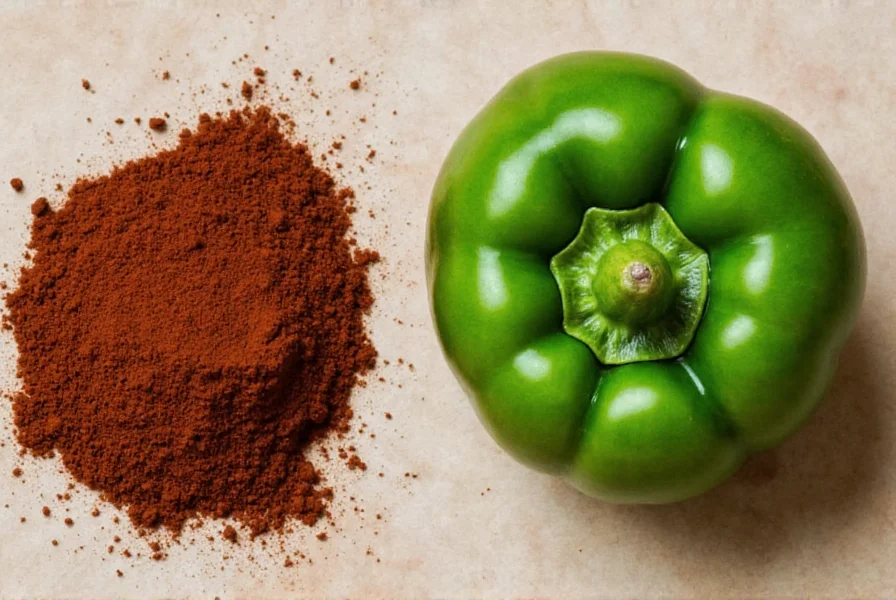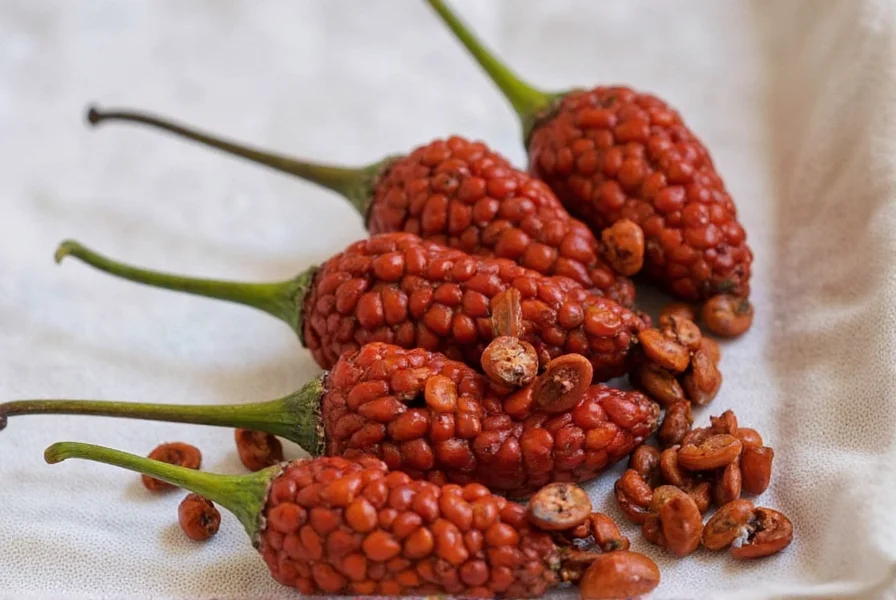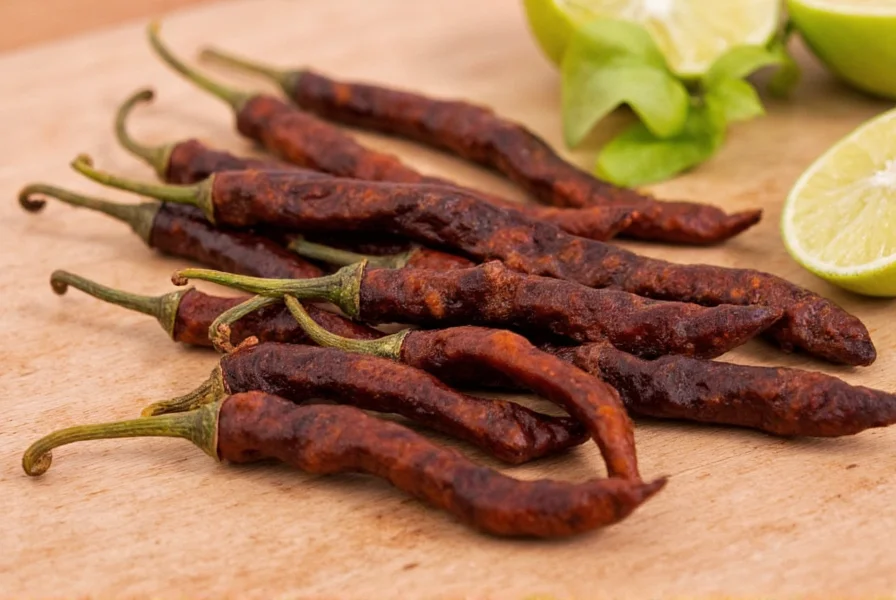Ancho Pepper: The Warm, Sweet Heart of Mexican Cuisine
The ancho pepper is more than just a spice—it's a flavor ambassador from the heart of Mexico. Known for its deep, smoky sweetness and mild heat, this chili is a staple in many traditional dishes. Whether you're a seasoned chef or a home cook looking to elevate your cooking, understanding the ancho pepper can open up a world of rich, complex flavors.
Table of Contents
- What Is an Ancho Pepper?
- Flavor Profile and Uses
- How to Use an Ancho Pepper
- Buying Guide: Choosing the Best Ancho Peppers
- Cooking Tips for the Perfect Dish
- Frequently Asked Questions
- Conclusion
What Is an Ancho Pepper?
The ancho pepper (Capsicum annuum) is one of the most popular chilies used in Mexican cuisine. It's actually the dried form of the poblano pepper, which means it’s packed with intense flavor but much milder in heat compared to other chilies like jalapeños or habaneros. Its name comes from the Spanish word *ancho*, meaning 'wide,' which refers to its large, bell-shaped appearance.

Flavor Profile and Uses
When it comes to flavor, the ancho pepper is a powerhouse. It offers a deep, earthy sweetness that’s often described as similar to dried fruit or dark chocolate. There's also a subtle smokiness, which makes it perfect for adding depth to sauces, stews, and marinades. While it has some heat, it’s generally considered a mild chili, making it ideal for those who enjoy flavor without the burn.
Some common uses include:
- Mole sauce: A classic Mexican sauce made with ancho peppers, chocolate, nuts, and spices.
- Chili con carne: Adds a rich, smoky base to the dish.
- Enchiladas and tamales: Used in the filling or sauce to enhance taste.
- Spiced soups and stews: Infuses warmth and complexity into every bite.

How to Use an Ancho Pepper
Using ancho peppers is simple, but there are a few key steps to bring out their best flavor:
- Rehydrate: Soak the dried peppers in hot water for about 20–30 minutes until they soften.
- Remove stems and seeds: For a milder flavor, take out the seeds and stem before blending.
- Blend into sauces or purees: They work great in smoothies, salsas, and sauces.
- Toast for extra flavor: Sauté the rehydrated peppers briefly to deepen their smoky notes.
Pro tip: Don’t be afraid to experiment! Try using ancho peppers in everything from grilled meats to baked goods for a unique twist.
Buying Guide: Choosing the Best Ancho Peppers
If you're new to ancho peppers, knowing where to buy them and what to look for can make a big difference in your cooking. Here are some top products and tips for selecting the right ones:
| Product | Features | Use Cases | Target Audience | Suitable Occasions |
|---|---|---|---|---|
| Whole Dried Ancho Peppers | Dark red, plump, and slightly wrinkled | Cooking sauces, stews, and roasting | Home cooks and professional chefs | Weeknight meals, holiday feasts, and family gatherings |
| Ground Ancho Pepper | Finely ground, aromatic, and ready to use | Seasoning blends, rubs, and baking | Chefs and spice enthusiasts | Barbecues, meat rubs, and specialty dishes |
| Ancho Pepper Paste | Concentrated, easy to blend, and shelf-stable | Quick sauces, dips, and dressings | Busy individuals and casual cooks | Weekday dinners, potlucks, and parties |
When shopping, look for peppers that are firm, not brittle, and have a deep red color. Avoid any that are overly dry or have a musty smell, as these may be old or poorly stored.

Cooking Tips for the Perfect Dish
To get the most out of your ancho peppers, follow these expert tips:
- Soak properly: Let them sit in warm water for at least 20 minutes to fully rehydrate.
- Use fresh ingredients: Pair ancho peppers with fresh tomatoes, onions, garlic, and herbs for the best results.
- Balance the heat: If you’re concerned about spiciness, start with a small amount and adjust to taste.
- Experiment with pairings: Ancho works well with chocolate, cinnamon, and cumin—try combining them for bold flavors.
- Store correctly: Keep dried peppers in an airtight container in a cool, dark place to preserve freshness.
Frequently Asked Questions
Is ancho pepper the same as pasilla pepper?
No, while both are dried chilies used in Mexican cuisine, ancho and pasilla differ in flavor and heat level. Ancho is sweeter and milder, while pasilla has a more fruity, smoky profile and slightly higher heat.
Can I substitute ancho pepper with another chili?
Yes, but the flavor will change. You can use guajillo, mulato, or even a combination of mild chilies if ancho is unavailable. Just keep in mind that the final dish may not have the same depth of flavor.
Are ancho peppers good for health?
Absolutely! Ancho peppers are rich in vitamins A and C, and they contain capsaicin, which may help boost metabolism and support heart health.
Conclusion
The ancho pepper is a culinary gem that brings warmth, sweetness, and depth to any dish. Whether you're making a classic mole sauce or experimenting with new recipes, this versatile chili can transform your cooking experience. With the right preparation and knowledge, you’ll be able to unlock its full potential and enjoy the rich, smoky flavor that has made it a favorite across generations.
Remember, the key to mastering ancho peppers lies in practice and exploration. So grab a bag, let your creativity flow, and enjoy the journey into the heart of Mexican cuisine.










 浙公网安备
33010002000092号
浙公网安备
33010002000092号 浙B2-20120091-4
浙B2-20120091-4